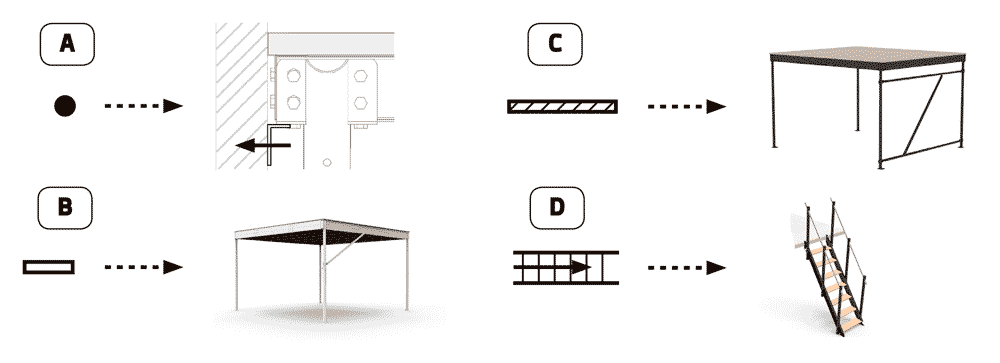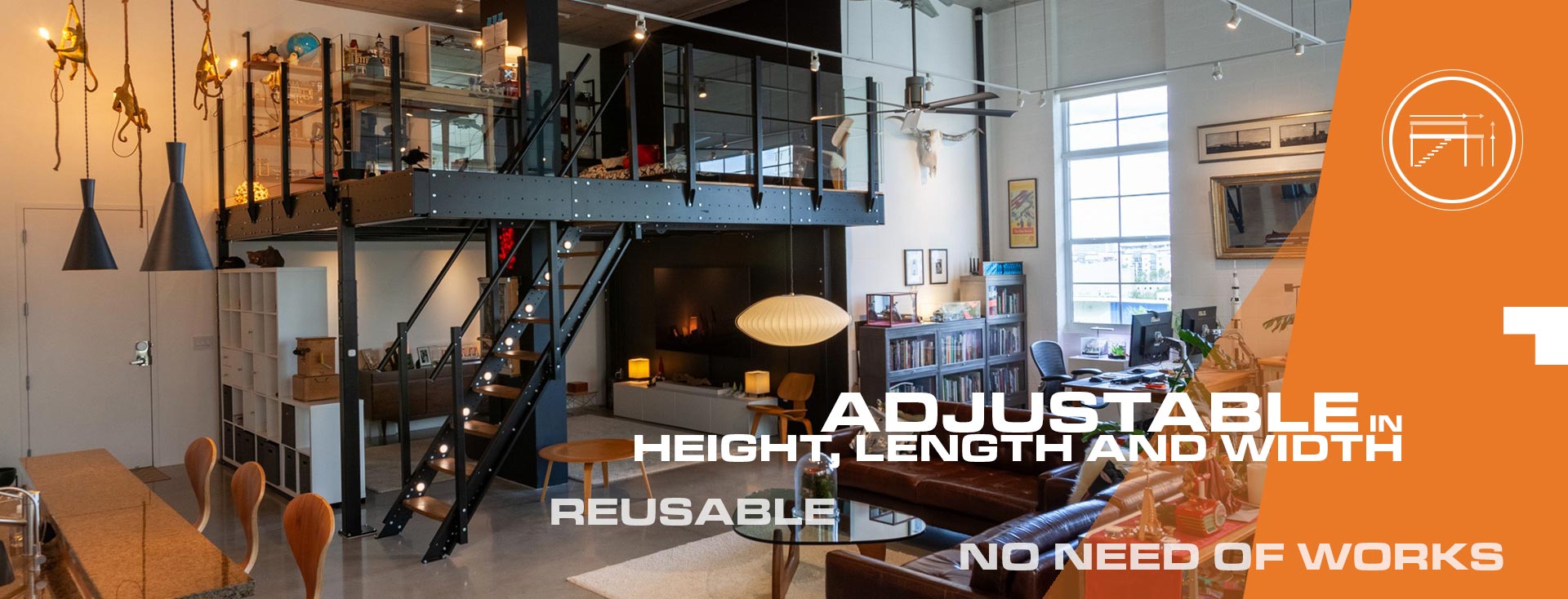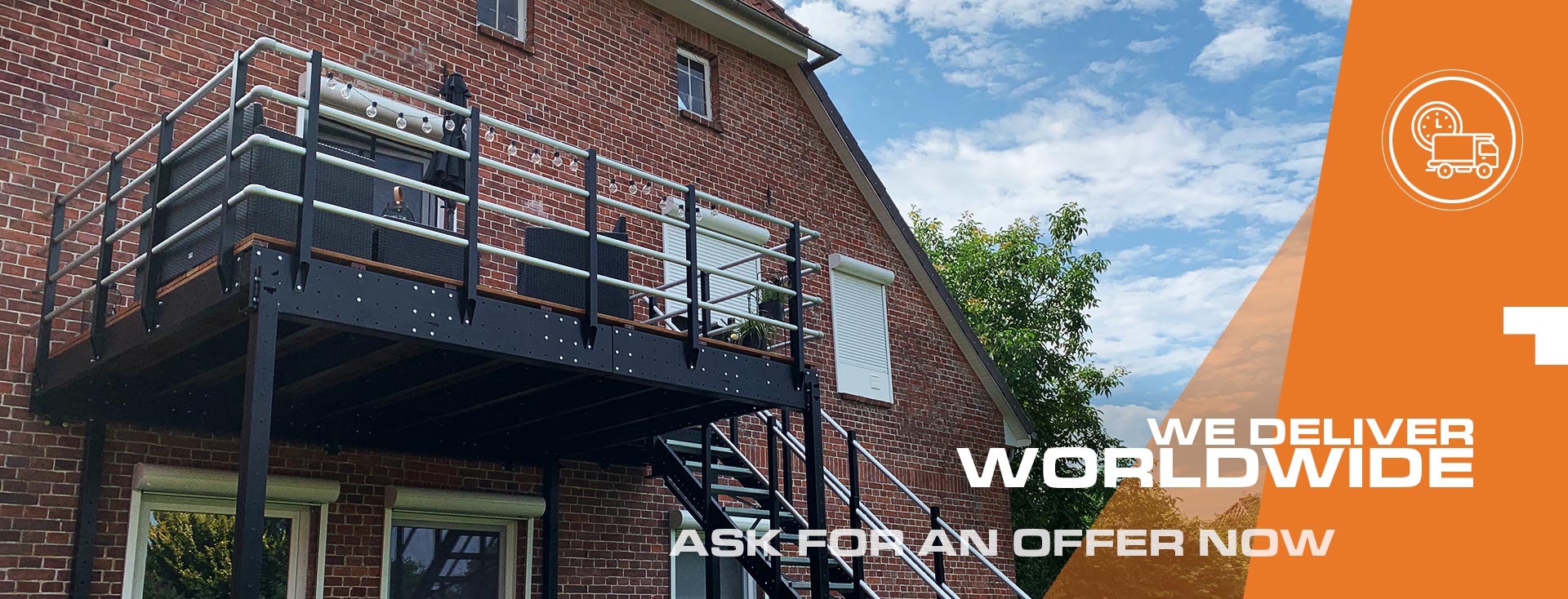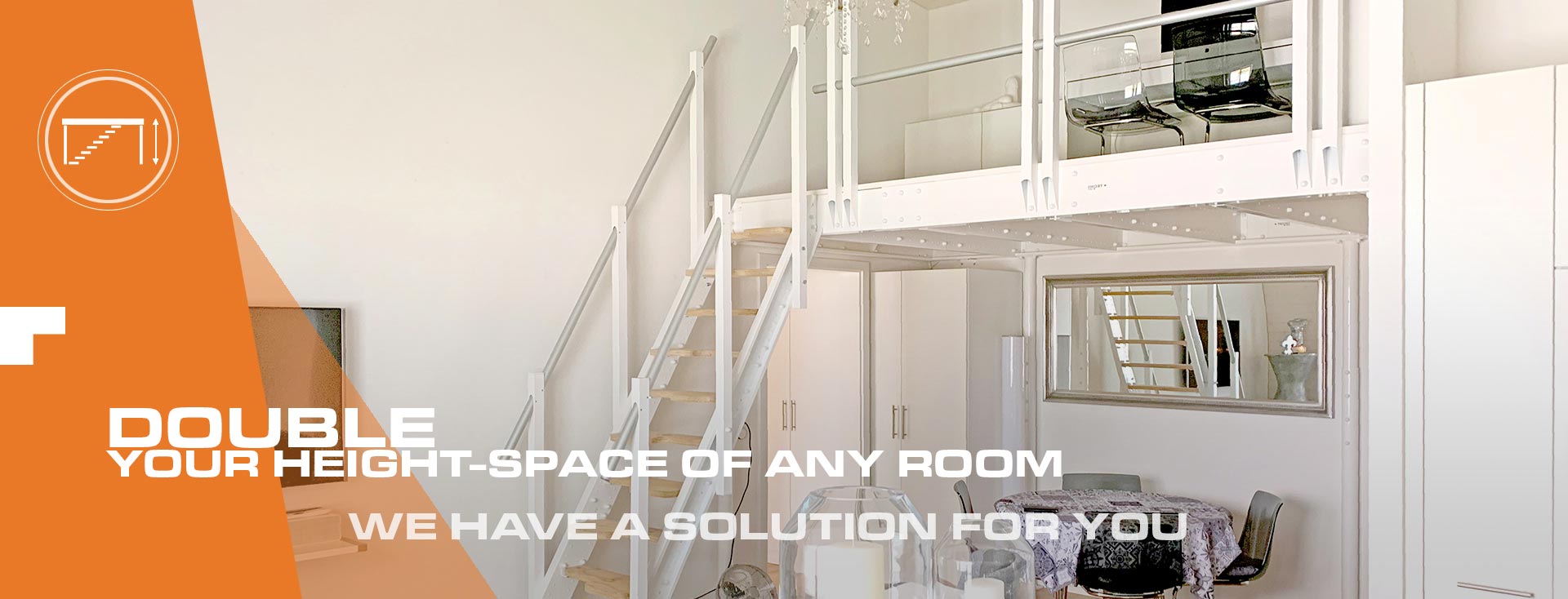Need Help?
Installation
To install Tecrostar mezzanines you need 2 adults (they do not need to be DIY experts). It is recommendable to use personal safety equipment like gloves, boots, etc. in order to avoid accident.
When installing range L mezzanines you may need to use some type of scaffolding or ladder for working at heights and manual or electric lifting machinery to raise the primary beams, particularly if the structure is more than 3m high. The other ranges can be lifted easily by hand.
You will need the following tools to install the mezzanines: tape measure, some type of spanner for m10 and m8 bolts and a screwdriver (an electric screwdriver will make the task much easier), spirit level, drill and a tool for cutting the panels (saw, jigsaw, circular saw, etc.)
You can find all the tools required to assemble it and tested by Tecrostar in the tools section.
All the models are installed by following these steps:
Pre-assemble the structure on the floor in the desired area.
Raise the outer structure to the desired height.
Finish assembling the structure and floor.
Yes, you can. As they are manufactured with light steel profiles with a high yield point they are very light and the load per column is very low. The only restriction is the storage load on the mezzanine: instead of 200kg/m², it may be reduced to 800kg for the whole mezzanine. A home with a concrete structure usually supports a point load of at least 200kg on a surface of 5x5cm. The T8 mezzanine weighs 199kg and the T15 mezzanine weighs 356kg, both weights are distributed over 4 columns. You can install either of these two metal mezzanines in your home, provided that the load stored on them is limited. Ask Tecrostar about the specific features of your project.
You can do it yourself with the help of a friend. It is easily installed in a few hours, depending on the product.
TS8 Mezzanine: 3 hours with 2 people
TM15 Mezzanine: 4 hours with 2 people
TL30 Mezzanine: 5 hours with 3 people
The times are a guideline and for assembly only. You need to add the time it takes to measure up, move the components to the location, clean up, etc.
One of the most important sections is attaching the mezzanine. For greater safety and stability we recommend attaching the columns to the floor with the fixings supplied with the kit. In addition, we recommend attaching the mezzanine to the adjoining walls in order to stabilise the structure. The components for attaching the structure to the wall are also included.
Anchoring the columns to the floor
Anchoring the columns to the floor adds stability to the structure. We always recommend anchoring them, especially if mezzanines are installed in places where the columns can be knocked into (circulation of forklifts, etc.).
If the mezzanine is installed in a home and it is attached to the wall you can purchase column base kits so you don’t have to anchor the columns to the floor.
Attaching the structure to the wall
Depending on the number of adjoining walls, there are different systems for improving safety and stability.
Key:
A) Wall anchors
B) Brace
C) Z brace
D)Stairs (the stairs stabilise the structure)
E) pacer brace

Two walls and anchored to the floor:
1.1 Two facing walls. Only wall anchors are required.
1.2 Two perpendicular walls. Only wall anchors are required.
1.3 Two perpendicular walls, one of them further away from the mezzanine. Wall fixings and spacer brace on the separated wall.

One wall and anchored to the floor:
2.1 Attached to one wall. Two braces are required
2.2 Attached to one wall and stairs parallel to the wall. No braces are required
2.3 Attached to one wall and inside stairs parallel to the wall. No braces are required
2.4 Attached to one wall and stairs with landing. One brace is required

3. No walls and anchored to the floor:
3.1 Without stairs. 4 braces are required
3.2 With stairs. 3 braces are required

4. No walls and not anchored to the floor:
4.1 Without anchoring to the floor, without walls and without stairs. Two Z braces and 4 normal braces are required.
4.2 Without anchoring to the floor, without walls and with stairs. Two Z braces and 3 normal braces are required.

5. Three walls
Bracing kits are not required but you do need to attach it to the walls. It is important the wood floor is rounded off against the walls.
Type of wall anchor
The walls can be made of different materials, according to which one type of bolt or another must be used to attach the structure to the wall.

M1 –
M2 –
M3 –
M4 –
M5 –
*(These bolts and wall plugs are not included in the kit)





































































































































